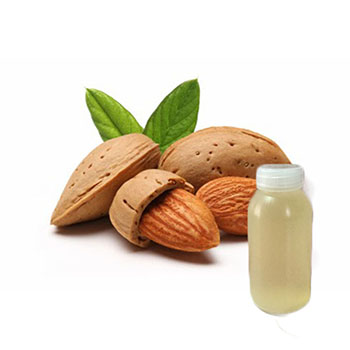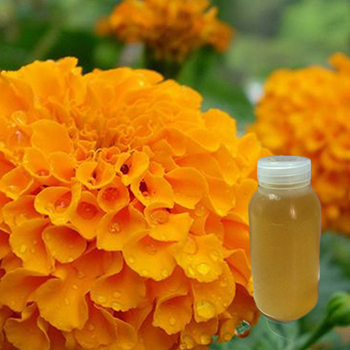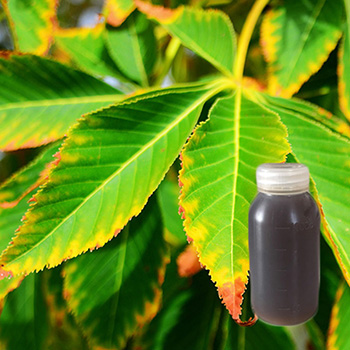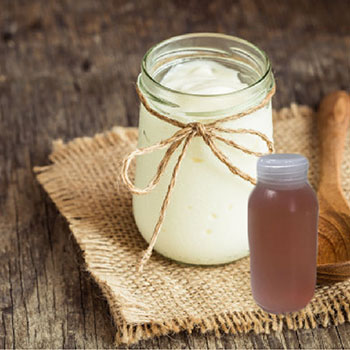目前購物車內沒有商品
Family: Asteraceae
Genus: Echinacea
Common name(s): Echinacea; Purple Coneflower; Kansas Snakeroot; Black Sampson
DESCRIPTION:
Resembling a black-eyed Susan, echinacea or purple coneflower is a North American perennial that is indigenous to the central plains where it grows on road banks, prairies, fields and in dry, open woods. It is also called snake root because it grows from a thick black root that Indians used to treat snake bites.
Herbalists consider Echinacea one of the best blood purifiers and an effective antibiotic. It activates the body's immune system increasing the chances of fighting off any disease. This popular herb has been used to help ward off the common cold and to relieve the symptoms of hay fever.
The Plains Indians used various species of echinacea to treat poisonous insect and snake bites, toothaches, sore throat, wounds, as well as mumps, smallpox, and measles. The settlers quickly adopted the therapeutic use of the plant, and since that time it has become one of the top selling herbs in the United States. Since the early 1900's hundreds of scientific articles have been written about echinacea. Most of the research during the past 10 years has focused on the immunostimulant properties of the plant.
The constituents of echinacea include essential oil, polysaccharides, polyacetylenes, betain, glycoside, sesquiterpenes and caryophylene. It also contains copper, iron, tannins, protein, fatty acids and vitamins A, C, and E. The most important immune-stimulating components are the large polysaccharides, such as inulin, that increase the production of T-cells and increase other natural killer cell activity. Fat-soluble alkylamides and a caffeic acid glycoside called echinacoside also contribute to the herb's immune empowering effects.
It has been shown in animal and human studies to improve the migration of white blood cells to attack foreign microorganisms and toxins in the bloodstream. Research suggests that echinacea's activity in the blood may have value in the defense of tumor cells.
Echinacea properties may offer benefit for nearly all infectious conditions. Studies show echinacea prevents the formation of an enzyme which destroys a natural barrier between healthy tissue and damaging organisms. Echinacea is considered an effective therapeutic agent in many infectious conditions including upper respiratory infections, the common cold and sinusitis. The herb is a mild antibiotic that is effective against staph and strep infections.
Echinacea aids in the production of interferon has increases antiviral activity against, influenza (flu), herpes, an inflammation of the skin and mouth. It may reduce the severity of symptoms such as runny nose and sore throat and reduce the duration of illness.
Echinacea's antibacterial properties can stimulate wound healing and are of benefit to skin conditions such as burns, insect bites, ulcers, psoriasis, acne and eczema. It's anti-inflammatory properties may relieve arthritis and lymphatic swelling.
It has also been used in homeopathy treatments for chronic fatigue syndrome, indigestion, gastroenteritis, and weight loss.
One of the most popular herbs in America today is the Native American medicinal plant known as echinacea. The herb is named for the prickly scales in its large conical seed head, which resemble the spines of an angry hedgehog (echinos is Greek for hedgehog).
Echinacea is one of the primary remedies for helping the body rid itself of microbial infections. It is often effective against both bacterial and viral attacks, and may be used in conditions such as boils, septicaemia and similar infections. In conjunction with other herbs it may be used for any infection anywhere in the body. For example in combination with Yarrow or Bearberry it will effectively stop cystitis. It is especially useful for infections of the upper respiratory tract such as laryngitis, tonsillitis and for catarrhal conditions of the nose and sinus. In general it may be used widely and safely. The tincture or decoction may be used as a mouthwash in the treatment of pyorrhoea and gingivitis. It may be used as an external lotion to help septic sores and cuts. Much research is focussing upon this plant, providing important insights into its activity and potential uses. Glycosides from the roots have mild activity against Streptococci and Staphylococcus aureus. Echinacoside was the most active with about 6 mg being equivalent to one unit of penicillin. The tincture was able to reduce both the rate of growth and the rate of reproduction of Trichomonas vaginalis, and was found to be effective in halting the recurrence of Candida albicans infection. It seems to prevent infection and repair tissue damaged by infection, partially through inhibiting the activity of the enzyme hyaluronidase. The hyaluronidase system is a primary defense mechanism, involving connective "ground" substance, or hyaluronic acid, acting as a barrier against pathogenic organisms. Some pathogens activate an enzyme, hyaluronidase, which once activated destroys the integrity of the ground substance. This causes the barrier to become leaky, allowing pathogens to invade, attach themselves to exposed cells, penetrate the membrane and kill the cell. The result as an inflammatory infection. Echinacea inhibits the action of hyaluronidase by bonding with it in some way, resulting in a temporary increase in the integrity of the barrier. Fewer pathogens are able to stimulate the destruction of the ground substance. A range of constituents mediate this process, especially a complex polysaccharide called echinacin B. This anti-hyaluronidase action is involved in regeneration of connective tissue destroyed during infection and in the elimination of pathogenic organisms creating the infection. Purified polysaccharides prepared from Echinacea possess a strong activating force on the body's macrophage-mediated defense system. These macrophages initiate the destruction of pathogens and cancer cells. Echinacea activates macrophages by itself, independent of any effect with T-cells. A tumor-inhibiting principle has been found, a oncolytic lipid-soluble hydrocarbon from the essential oil. The echinacosides glycosides appear to be the primary `antibiotics', but there are many other active substances present which probably function synergistically. The polysaccharides possess the best immune stimulating properties and are also antiviral. Other constituents have been shown to possess good anti-tumor, bacteriostatic, and anesthetic activity.
This all points to the conclusion that its actions relate to immune system functioning on some level, helping deal with infections and stimulating the immune response. It activates the macrophages that destroy both cancerous cells and pathogens, increases the level of phagocytosis by raising levels of white blood cells such as the neutrophils, monocytes, eosinophils, and B lymphocytes. It also has an effect on properidin levels, indication an activation of the complement system.
Plant Description:
Echinacea has tall stems, bears single flowers that are pink or purple, and has a central cone that is usually purplish-brown in color. The large cone is actually a seed head with sharp spines that resemble a stiff comb. Of nine echinacea species, only three are used for medicinal purposes (Echinacea angustifolia, Echinacea pallida, and Echinacea purpurea).
Properties:
Echinacea supports the immune system. Several constituents in echinacea team together to increase the production and activity of white blood cells, lymphocytes, and macrophages. Echinacea also increases reduction of interferon, an important part of the body's response to viral infections such as colds and flu.
Main properties: Alterative, antiseptic, tonic, depurative, maturating, febrifuge
Part Used:
Root, dried; also liquid extract and juice. Often used in combination with goldenseal or vitamin C.
Care:
Full sun or light shade in hotter climates. Can grow in fairly poor and dry soil.
What's It Made Of?
Many chemicals contained in echinacea play a role in its therapeutic effects. These include polysaccharides, glycoproteins, alkamides, volatile oils, and flavonoids.
The chemicals contained in the root differ considerably from the upper part of the plant. For example, the roots have high concentrations of volatile oils (odorous compounds) while the above-ground parts of the plant tend to contain more polysaccharides (substances known to trigger the activity of the immune system). The beneficial effects of echinacea appear to be due to the combination of these active substances.
In Germany (where herbs are regulated by the government), the above-ground parts of E. purpurea are approved to treat colds, upper respiratory tract infections, urinary tract infections, and slow-healing wounds. The root of the E. pallida plant is also approved for the treatment of flu-like infections. Many echinacea products available in the United States contain one, two, or even all three plant species.
Available Forms:
There are three species of echinacea that are commonly used for medicinal purposes: Echinacea angustifolia, Echinacea pallida, and Echinacea purpurea. Many echinacea preparations available today contain one, two, or even all three of these species. Different products use different parts of the echinacea plant. For this reason, echinacea preparations vary considerably. This is why, some experts believe, the effectiveness of echinacea tends to differ from one product to the next.
Echinacea (including one, two, or all three species) is available in extracts, tinctures, tablets, capsules, and ointments. Echinacea is also available in combination with other immune-boosting herbs, vitamins, and minerals.
A recent study performed by ConsumerLab.com (an independent company that tests the purity of health, wellness, and nutrition products) found that of 25 brands of echinacea purchased for testing, only 14 (56%) truly contained what was stated on their labels. Six of the products were discarded because they were inadequately labeled according to FDA guidelines -- they did not identify the amount, species, or plant parts used. Among the 19 remaining products, two of 12 containing E. purpurea failed, with one product containing only 54% of the minimum level of active ingredients. Neither of the E. angustifolia products passed inspection. Be sure to buy products made by established companies with good reputations, and who distribute their products through trustworthy and knowledgeable establishments.
Echinacea Simulata and E. Paradoxa Roots:
In a 1991 study "The constituents of the roots of Echinacea simulata and E. paradoxa were examined by HPLC (high pressure liquid chromatography). The major lipophilic and hydrophilic compounds could be identified. E. Paradoxa contained several ketoalkenynes and proved to have almost identical constituents as E. pallida. E. Simulata contained alkamides as found in E. angustifolia and in addition ketoalkenynes as in E. pallida. Echinacoside was found in both species."11
Echinacea Angustifolia, Echinacea Purpurea, and Echinacea Pallida:
Some biochemical constituents all three have in common are echinacoside, polysaccharides, glycoproteins and a caffeic acid derivatives (cichoric acid), triglycoside of caffeic acid derivative echinacein.12/14
If listed as Echinacea spp. Compositae: the biochemical constituents have been recorded as follows: essential oil containing the oncolytic hydrocarbon (z)-1,8- pentadecadiene, polysaccharide 1 (a heteroxylan) containing arabinose, xylose, glactose, glucose, and 4-0-methylgluronic acid; polysaccharide 2 (an arabinorhamnogalactic) containing rhamnose, arabinose, galactose, and glucuronic acid; echinacen (an isoabutylkyamide comprising 0.01% of the dried root of E. angustifolia and 0.001% of the dried root of e. pallida); echinolone (appolyacetylene compound from E. angustifolia); echinacoside ( a glycoside found in E. angustifolia, at concentrations of 1% of root preparations); echinacin B; an unsaturated aliphatic sesquiterpene*; betain; insulin; inuloid; fructose; sucrose; higher fatty acids; 6.9% protein in air dried roots of E, angustifolia, 5.3% in E. purpurea; tannin; vitamin C; enzymes; an unidentified glucoside; resin; acids and thirteen polyacetylene compounds 13 (there is a theory that these are formed during storage, since it is said that they are found in dried but not fresh roots of E. pallida).
Chemical Composition:
The pharmacologically important constituents of echinacea can be grouped as follows:
Polysaccharides. A number of immunostimulatory and mildly anti-inflammatory polysaccharides have been isolated including inulin, found at 5.9% in E. angustifolia root. The most potent immune-enhancing polysaccharides are the water-soluble, acidic, branched-chain heteroglycans composed of many types of sugars rather than the polyfructose rich inulin.
Flavonoids. The leaves and stems of E. angustifolia and E. purpurea contain numerous flavonoids with rutoside being most abundant. Total flavonoid content (calculated as quercetin) in the two species was 0.48% and 0.38%, respectively.
Caffeic Acid Derivatives. Echinacoside, a caffeic acid derivative believed to be unique to echinacea, has been identified in the roots of E. angustifolia and E. pallida at concentrations of 0.3-1.3% and 0.4-1.7%, respectively. E. purpurea has been assumed to have similar levels. Cichoric acid, chlorogenic acid, and cynarin are also pharmacologically important caffeic acid derivatives found in echinacea.
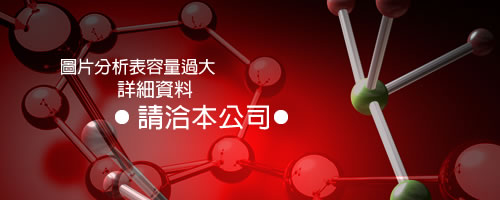
Essential Oils. The essential oil content of the three common species ranges from 0.1% in E. purpurea root to up to 2% in E. pallida root. Components of the essential oils include borneol, alpha-pinene, humulene, caryophyllene and its epoxide, germacrene D, and methyl-p-hydroxycinnamate.
Polyacetylenes. A number of polyacetylenes have been identified from the roots of all three commercial species. Echinolone, isolated from E. angustifolia, has shown insecticidal activity. At least 13 other polyacetylenes have been isolated.
Alkylamides. Isobutylamides, held responsible for echinacea's local anesthetic effect, are major constituents of the roots of E. angustifolia and E. purpurea. The amides of E. purpurea root have mainly a 2,4-dienoic unit such as dodeca-2E, 4E, 8Z, 10E- tetraenoic acid isobutylamide, whereas those of E. angustifolia root favor a monoenoic structure such as dodeca-2E-ene-8, 10-diynoic acid isobutylamide.
Miscellaneous. Other compounds isolated from echinacea species include: resins, glycoproteins, sterols, minerals, and the alkaloids, tussilagine and isotussilagine.
Sesquiterpene cinnamoyl esters which were originally identified in commercial samples of E. purpurea have since been shown to be due to an adulterant Parthenium integrifolium; it has been postulated that the polyacetylenes are artifacts formed during storage, since they are found in dried but not fresh roots of E. pallida (Awang & Kindack, 1991; Hoffman, 1998). Bauer and Wagner (1991) have reviewed the chemical composition of echinacea.

(2R,3R)-(-)-Caftaric acid)
IUPAC Name: (2E,3R)-2-[[3-(3,4-dihydroxyphenyl)-
1-oxo-2-propenyl}oxy]-3-hydroxybutanedioic acid
|
Molecular Formula: |
C13H12O9 |
|
Molecular Weight: |
312.23 |
|
Appearance: |
White to off-white solid |
|
Purity: |
98% by HPLC |
|
Proton NMR: |
Conforms to structure |
|
Application: |
Polyphenol Standard for the analysis of Echinacea products |
In contrast to the lack of activity of echinacoside, cichoric acid (see Figure ) from Echinacea caused a marked stimulation of phagocytosis in the in vitro granulocyte test, which was confirmed in the in vivo carbon-clearance test.9 This suggests cichoric acid may be an important active component, mainly in E. purpurea.

The following products are representative of the many echinacea preparations available:
Extracts or Tinctures:
Liquid extracts or tinctures may be alcohol- or glycerine-based. EchinaCare Liquid, imported from Switzerland, is the fresh-pressed juice of E. purpura stems, leaves, and flowers stabilized in 22% alcohol. The juice is standardized on a fixed content of 2.4% soluble beta -1, 2-D-fructofuranosides. Eclectic Echinacea, a Canadian firm, offers an extra strength tincture. Echinacea is macerated in a menstruum of absolute alcohol and distilled water to yield a 1:2 tincture corresponding to 1 kg of plant material to 2 liters of menstruum (Herbal Resources, Inc., 1995; Herb Research Foundation, 1997; Eclectic Echinacea Corp., 1998).
Capsules or Tablets:
Echinacea capsules or tablets may contain root powder or herb. EchinaCare capsules from Switzerland contain a powder concentrate from the fresh-pressed juice of E. purpurea stems, leaves, and flowers standardized to 2.4% beta-1,2-D-fructofuranoside. The 50 mg capsules are also standardized at a 50:1 ratio (50 pounds of plant material to yield one pound of powder). Vitamin Connection, a catalog company, offers five different capsule products ranging in strength from 226 to 500 mg (Herbal Resources, Inc., 1995; Herb Research Foundation, 1997; Vitamin Connection, 1998).
Tea:
The root and/or herb may be brewed as a tea. The herb tea offered by Eclectic Echinacea uses the dried flowering tops of the echinacea plant (Herb Research Foundation, 1997; Electic Echinacea, 1998).
Cream:
A skin cream from Eclectic Echinacea contains 10% fresh echinacea formulated in bees wax with benzoin as a fixative (Eclectic Echinacea, 1998).
Echinacea is also found in combination herbal products, such as in capsules with astragalus and reishi mushroom, or with goldenseal. Absorbine Jr., a rub for muscle aches, contains echinacea combined with marigold, wormwood, and menthol (Awang & Kindack, 1991).
Echinacea is regarded as effective in treating certain viral and bacterial infections as well as wounds and inflammation, while stimulating the immune system. Its ability to potentiate the immune system and to reduce inflammation provide the basis for many of its suggested uses including treatment of colds, coughs, flu, other upper respiratory infections, enlarged lymph glands, sore throat, urinary tract infections, herpes and candida, wounds, skin infections, eczema and psoriasis (Awang & Kindack, 1991; Brown, 1996; Herb Research Foundation, 1997).Echinacea has been used in conjunction with cyclophosphamide and thymostimulin for immunostimulation in patients with advanced cancers (Lersch et al., 1990; 1992).Echinacea is also used in toothpastes and cosmetics (Awang & Kindack, 1991).
Structure Activity Relationships:
Echinacea consists of a complex mixture of natural products which does not lend itself to traditional structure activity analysis.
